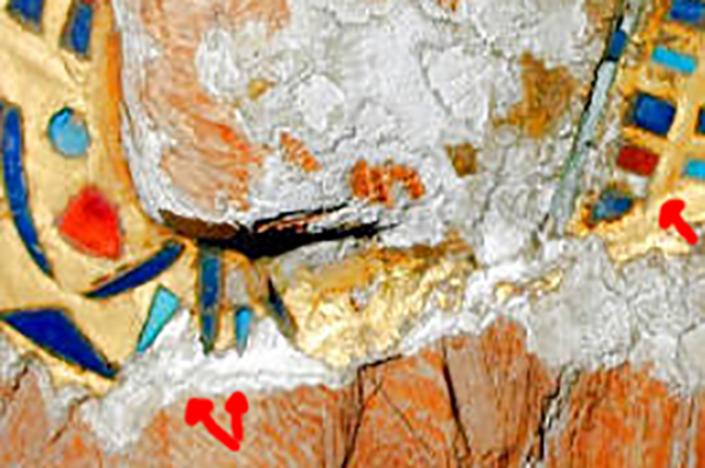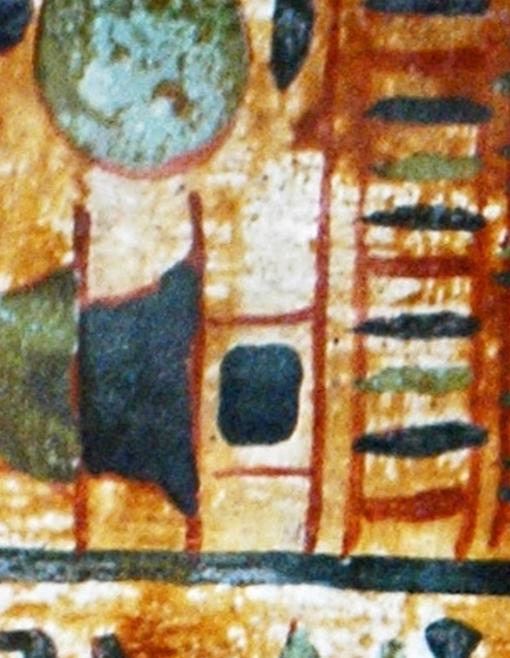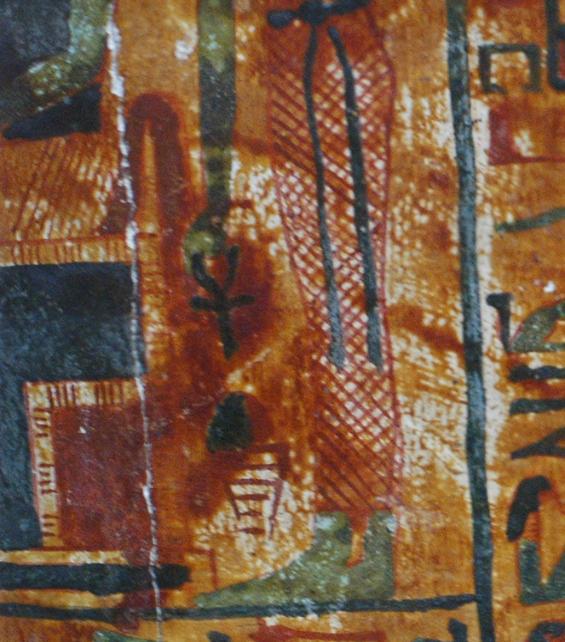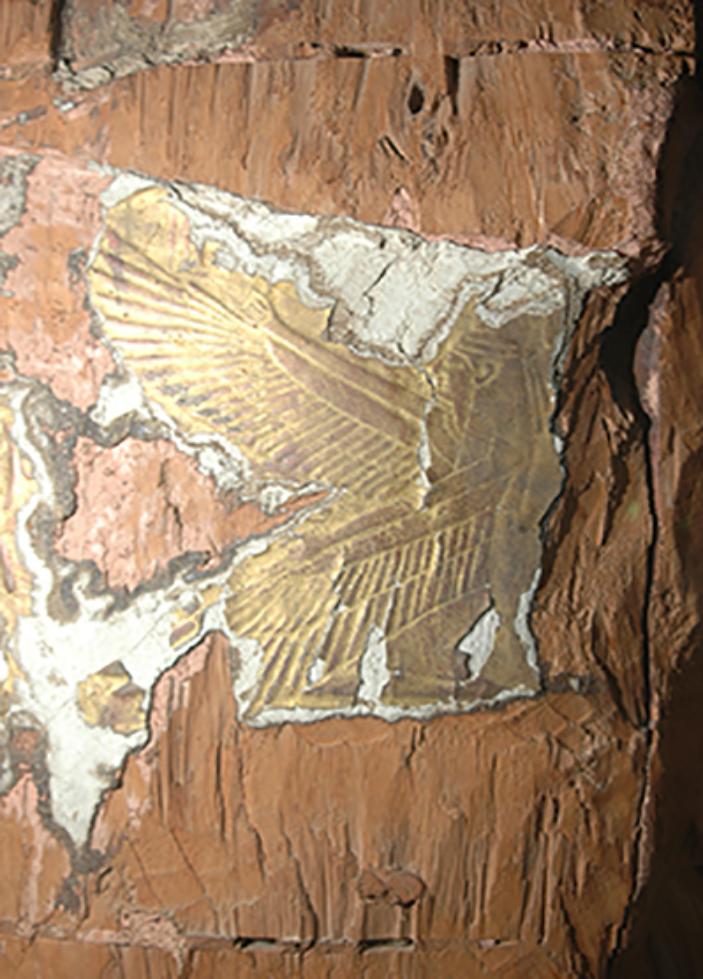| Russian Academy of Sciences Centre for Egyptological Studies, Moscow (CESRAS) & Russian Institute of Egyptology in Cairo (RIEC) Research on the Funerary Art of the 21a Theban Dynasty of Payanch and Personages of that Period (1070-945 BCE) Site Directory Personages Artifacts Iconography Deities Royal Cache TT320 Network Index |
Intellectual property of the Russian Academy of Sciences, Centre for Egyptological Studies, Moscow R.F. This material may be freely used for non-commercial, educational,
and public services applications. If you use our material, please give a credit to CESRAS, Moscow, and make a link to http://www.cesras.org. You may contact us by email:
admin@cesras.org and we would be happy to help you in any way we can. Thanks for your visit to this site and please do come again. There will always be something new!
and public services applications. If you use our material, please give a credit to CESRAS, Moscow, and make a link to http://www.cesras.org. You may contact us by email:
admin@cesras.org and we would be happy to help you in any way we can. Thanks for your visit to this site and please do come again. There will always be something new!
ACHIEVEMENTS AND PROBLEMS OF MODERN EGYPTOLOGY
Proceedings of the International Conference held in Moscow on September 29-October 2, 2009
Edited by Galina A. Belova
Digital photographic addenda to the paper THEY WERE NOT YELLOW, 21st (21a) Theban Dynasty
Edward R. Loring
29.03.2014
Proceedings of the International Conference held in Moscow on September 29-October 2, 2009
Edited by Galina A. Belova
Digital photographic addenda to the paper THEY WERE NOT YELLOW, 21st (21a) Theban Dynasty
Edward R. Loring
29.03.2014
Next page (click)
Yesterday, in connection with a valid question concerning the "lost" yellow backgrounds of the painted surfaces of anthropoid
Theban coffins of the 21a Dynasty of the High Priest of Amun, Payanch (pAyanx), I reviewed our considerable collection of
original CESRAS photographs in order to publish more "not yellow" evidence here. I have chosen only photographs of details on
the "family" coffins removed unscientifically from the "Royal Cache" TT320 by Emil Brugsch in 1881. They are shown on these
pages in chronological order.
Theban coffins of the 21a Dynasty of the High Priest of Amun, Payanch (pAyanx), I reviewed our considerable collection of
original CESRAS photographs in order to publish more "not yellow" evidence here. I have chosen only photographs of details on
the "family" coffins removed unscientifically from the "Royal Cache" TT320 by Emil Brugsch in 1881. They are shown on these
pages in chronological order.
Click on photos for full size images.
CG-61025 HPA Pinodjem I (later king Chacheperraw): coffin of Tutmosis I usurped and
redecorated for Pinodjem (lid, thorax). It is quite certain to believe that this is a secondary
burial. Pinodjem as king would certainly have had magnificent coffins of his own. Compare the
outer coffin of his son in Cairo, HPA Masaharta who died ten years before his father (the inner
coffin is in Luxor and although we had permission from the SCA, the revolution prevented us
from photographing it).
This close-up is a detail of Pinodjem's reworked inner coffin of Tutmosis I. I have added red
arrows pointing to small places where the painting or inlay is on white. Elsewhere you can
clearly see that there was no yellow between the gesso and the gilding.
erl/CESRAS/2014
redecorated for Pinodjem (lid, thorax). It is quite certain to believe that this is a secondary
burial. Pinodjem as king would certainly have had magnificent coffins of his own. Compare the
outer coffin of his son in Cairo, HPA Masaharta who died ten years before his father (the inner
coffin is in Luxor and although we had permission from the SCA, the revolution prevented us
from photographing it).
This close-up is a detail of Pinodjem's reworked inner coffin of Tutmosis I. I have added red
arrows pointing to small places where the painting or inlay is on white. Elsewhere you can
clearly see that there was no yellow between the gesso and the gilding.
erl/CESRAS/2014
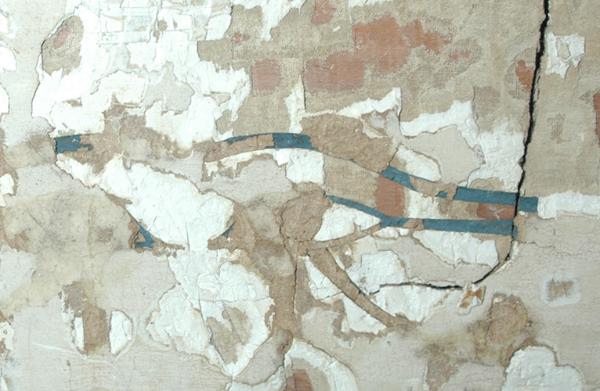
Cairo, CG-61024: Nedjemet, outer coffin, tub, outside, left.
Nedjemet is actually a figure of the 20th Dynasty's final days, the
wHm-mswt era. There is considerable debate as to her place in the
dawning Theban 21a Dynasty, but this is not the subject of this
entry. The photo is only shown because there is absolutely no sign
of yellow.
Nedjemet is actually a figure of the 20th Dynasty's final days, the
wHm-mswt era. There is considerable debate as to her place in the
dawning Theban 21a Dynasty, but this is not the subject of this
entry. The photo is only shown because there is absolutely no sign
of yellow.
Cairo CG61026 Henuttauy: the second and principle wife of Chacheperraw
Pinodjem I. There is no evidence of any yellow having been used. No traces of
his first wife, Asetemachbjt A (Isetemheb A) have been found.
Pinodjem I. There is no evidence of any yellow having been used. No traces of
his first wife, Asetemachbjt A (Isetemheb A) have been found.
Cairo, CG61027 HPA Masaharta, son of Chacheperraw Pinodjem I.
In year 16 of his pontificate as HPA, Pinodjem promoted himself to King Chacheperraw, very much as in our days generals
sometimes promote themselves to fieldmarshals. There seems to have been no objection. Upon becoming king, Pinodjem's
eldest son, Masaharta, likely the son by his first wife, Asetemachbjt A (Isetemheb A) became HPA. Masaharta was the father of
only one known child, Asetemachbjt B (Isetemheb B). She is only known through a leather funerary baldachin, the only object of
its kind anywhere, found in TT320. A very short time before the revolution, my project to conserve the baldachin, a very
complicated matter, and display it properly, was approved by the SCA. Our CESRAS Team was all prepared to start when the
revolution came.
The photo at left is in the middle of the lid of the coffin. These are portions of my original photos and have not been processed in
any manner. The photo at right is from the tub, outside, left. In both photos we see the most secure proof of white backgrounds.
I have said it elsewhere, but will repeat: the draughtsman's original line on white gesso is absolute proof of a white working
surface. On the right side of the photo, the red outlined band with alternating red/wite/blue/white/green/etc, although of the worst
quality, shows the reaction of the three colours to the varnish covering during 3000 years. Red remains red (in some cases it
may become slightly orange, red+yellow->orange). White obviously becomes yellow. Cheerful Egyptian Blue turns through
various shades of green to black, blue+yellow->green...to greenish black....to black black. The original green stripe remains
green when covered with yellow varnish, yellow being a part of green. Thus, everything that you see as dark green or black was
bright Egyptian Blue when the painter stepped back from a finished work. Our TT320 coffins all had white backgrounds, but in
this study I certainly do not wish to say that all coffins had white backgrounds. In the Leiden Museum storeroom I have seen a
coffin where the wooden surface is painted bright yellow. In Vienna I have seen a buff background. I am sure that there are other
various backgrounds elsewhere.
The photo at right shows my favorite "proof of white stamp", the lady's cross-striped dress with a double blue sash, tied below
the breasts and in better drawings, extending to the feet. The green feet here tell us that it is a goddess, almost always Isis or
Nephthys. She is standing behind a throning god, generally Osiris. The throne is of help in our colour study. It is very primitive,
but just that shows us the "canonic" colour composition of thrones: the main "sitting part" is blue; the inset at lower right is red.
There is a thick red covering on the back of the seat and folded over the back continues downwards.
That is the basic construction of thrones.
In the photo at right it is important to notice the brush strokes of the varnishing. They are stiff bristles and show that the man
doing the varnishing was certainly not a painter, but rather an unskilled man who took no pride in his work and did a sloppy job.
This can be seen on almost all coffins of the period.
In year 16 of his pontificate as HPA, Pinodjem promoted himself to King Chacheperraw, very much as in our days generals
sometimes promote themselves to fieldmarshals. There seems to have been no objection. Upon becoming king, Pinodjem's
eldest son, Masaharta, likely the son by his first wife, Asetemachbjt A (Isetemheb A) became HPA. Masaharta was the father of
only one known child, Asetemachbjt B (Isetemheb B). She is only known through a leather funerary baldachin, the only object of
its kind anywhere, found in TT320. A very short time before the revolution, my project to conserve the baldachin, a very
complicated matter, and display it properly, was approved by the SCA. Our CESRAS Team was all prepared to start when the
revolution came.
The photo at left is in the middle of the lid of the coffin. These are portions of my original photos and have not been processed in
any manner. The photo at right is from the tub, outside, left. In both photos we see the most secure proof of white backgrounds.
I have said it elsewhere, but will repeat: the draughtsman's original line on white gesso is absolute proof of a white working
surface. On the right side of the photo, the red outlined band with alternating red/wite/blue/white/green/etc, although of the worst
quality, shows the reaction of the three colours to the varnish covering during 3000 years. Red remains red (in some cases it
may become slightly orange, red+yellow->orange). White obviously becomes yellow. Cheerful Egyptian Blue turns through
various shades of green to black, blue+yellow->green...to greenish black....to black black. The original green stripe remains
green when covered with yellow varnish, yellow being a part of green. Thus, everything that you see as dark green or black was
bright Egyptian Blue when the painter stepped back from a finished work. Our TT320 coffins all had white backgrounds, but in
this study I certainly do not wish to say that all coffins had white backgrounds. In the Leiden Museum storeroom I have seen a
coffin where the wooden surface is painted bright yellow. In Vienna I have seen a buff background. I am sure that there are other
various backgrounds elsewhere.
The photo at right shows my favorite "proof of white stamp", the lady's cross-striped dress with a double blue sash, tied below
the breasts and in better drawings, extending to the feet. The green feet here tell us that it is a goddess, almost always Isis or
Nephthys. She is standing behind a throning god, generally Osiris. The throne is of help in our colour study. It is very primitive,
but just that shows us the "canonic" colour composition of thrones: the main "sitting part" is blue; the inset at lower right is red.
There is a thick red covering on the back of the seat and folded over the back continues downwards.
That is the basic construction of thrones.
In the photo at right it is important to notice the brush strokes of the varnishing. They are stiff bristles and show that the man
doing the varnishing was certainly not a painter, but rather an unskilled man who took no pride in his work and did a sloppy job.
This can be seen on almost all coffins of the period.
